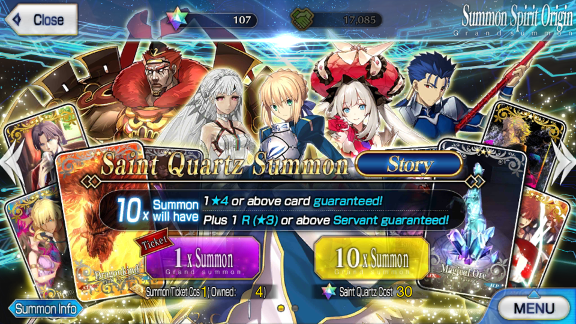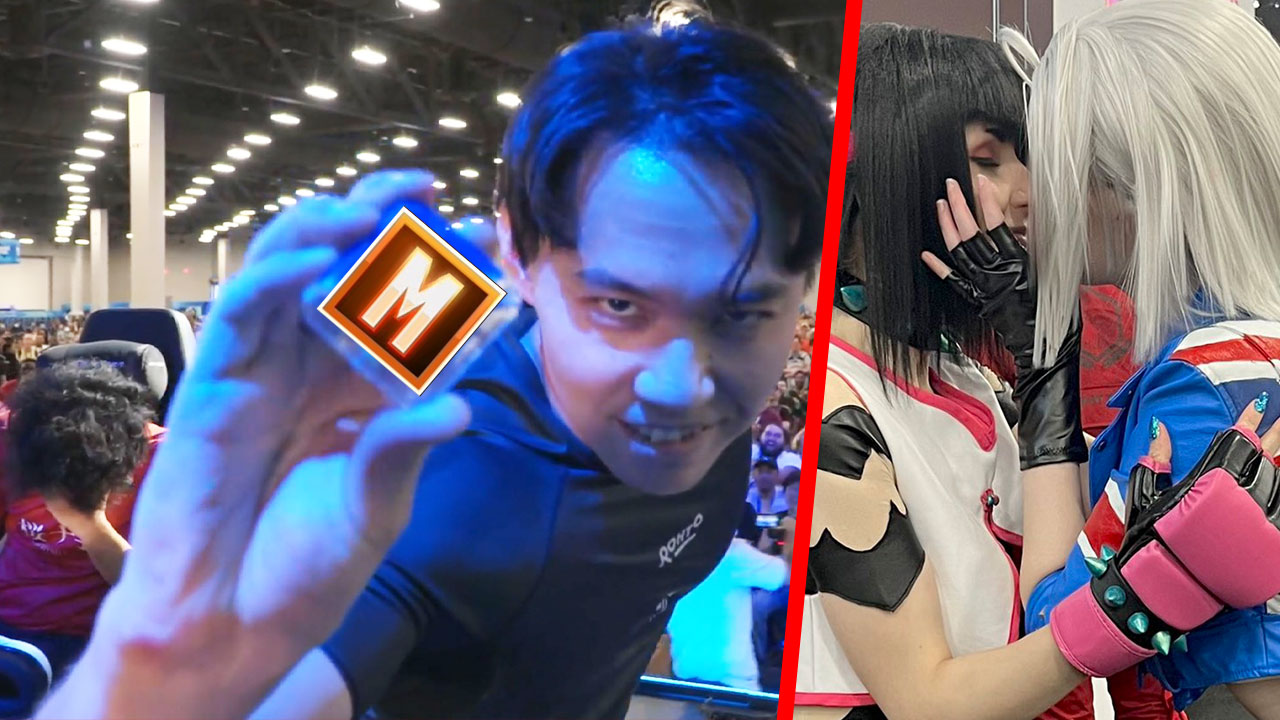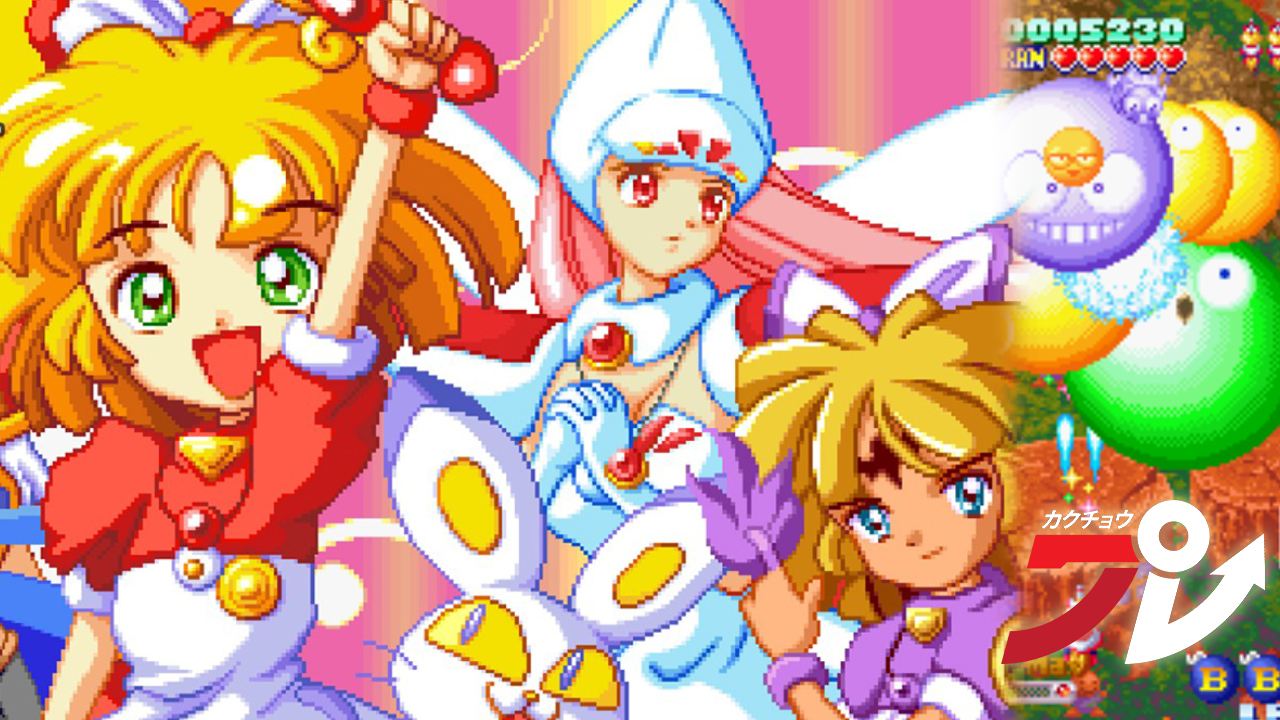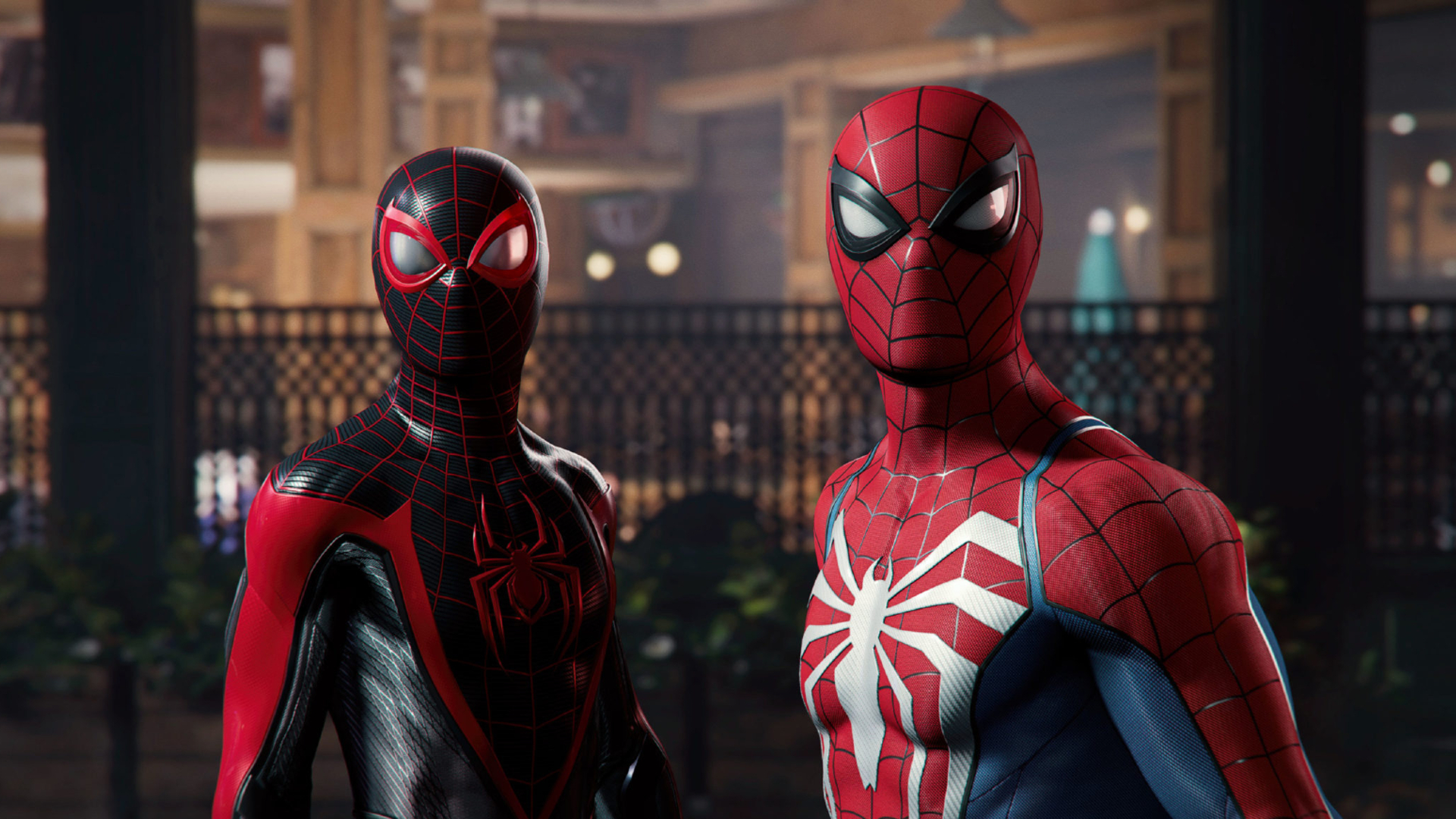

Write what you are looking for and press enter to begin your search!

Live News


Japanese Gacha Games, & The Love-Hate Relationship We Have With Them

By Kumikones|May 15, 2019|15 Comments
In the past decade, the mobile app market has thrived as a platform for enjoyable experiences on the go. The market first started out offering many complete games for flat but affordable prices. That format has maintained itself over the years, but as the number of mobile apps rose exponentially, developers had to adapt by coming up with newer strategies that would help them remain relevant.
Microtransactions were a popular solution in which publishers would release their apps for free, while instead offering in-app purchases for additional features. This allowed them to reach wider audiences in a saturated market. The design of games had to change reflect the shift to microtransactions. Over time, players started seeing more paywalls that incentivised spending money on retries, additional content, or more play sessions.
Following this model’s success, a new genre of mobile gaming started making waves in Eastern Asia. While many developers would sell in-game items in exchange for real-life cash, Japanese games were ramping up on introducing a little bit of luck into the mix.

Thinking about having a fancy dragon in your game? What if instead of being given the dragon, you only had a chance of having it? This was the idea of ‘gacha games’ in a nutshell.
‘Gacha games’ were derived from the term ‘gachapon’, a reference to the various Japanese vending machines that you could find across the country. At cheap prices of 100 yen, these machines would dispense toy capsules of which the contents would be completely unknown until opened.
Gacha games shared similarities with these vending machines, and so the public quickly settled for the ‘gacha’ term as a way of describing them. Japanese mobile games soon flourished, with the concept of gacha singlehandedly changing the landscape of gaming in Japan, for better or worse.
Back in early 2019, social media giant Twitter wrote a fun blog post about the most tweeted gaming topics of 2018 to commemorate the New Year.
To the surprise (and amusement) of many people, it wasn’t the popular Fortnite that trumped this list at 1st place. Rather, a lone Japanese mobile game called Fate/Grand Order cleanly beat out the sensational battle royale, which leads to laughs and jokes. Even though this information was taken in stride, for the most part, some saw this as a demonstration of how culturally significant gacha games actually were in gaming.
Throughout the top 10 list, other gacha games included the likes of Monster Strike (3rd), Granblue Fantasy (6th), and Ensemble Stars (7th). Four Japanese mobile games made the list for the most discussed games of 2018.
It comes as no surprise, then, that these games also make a lot of bank.
Fate/Grand Order, published under Sony’s Aniplex, reportedly grossed a total of $3 billion since its Japanese launch in August 2015. For comparison’s sake, Sony’s fastest-selling PS4 title, Marvel’s Spider-Man, has sold 9 million copies to date, which at a $60 price point would amount to a measly $540 million in comparison.

Even Square Enix, which spearheaded the console gaming industry in the past through its Final Fantasy titles, reported mobile game revenue as 54% of its digital entertainment segment at 26 billion yen ($236 million). Its HD game revenue represented a smaller 31% of the segment. The company hosts a large number of major gacha names, including the likes of Final Fantasy Brave Exvius, SINoALICE, Star Ocean Anamnesis, and more.
One gaming giant that’s been experimenting with gacha games lately is Nintendo. Though the company has offered a variety of inoffensive and family-friendly monetisation models through Super Mario Run and Animal Crossing, the bulk of its revenue is still carried by – you guessed it – gacha games.
In 2018, Fire Emblem Heroes accounted for two-thirds of Nintendo’s mobile revenue at $200 million. Success would also follow Nintendo’s original mobile IP, Dragalia Lost, which generated a whopping $50 million despite its late September release.
Gacha games make a lot of money, so perhaps the next question to ask is whether they’re actually fun.
If you’re familiar with the fiasco about loot boxes in the West, you may already be familiar with the gacha mechanic in some form. The core idea behind gacha games involves making use of in-game currency to summon virtual items such as a character, weapon, or cosmetic. The catch, however, is that these items are always randomised so that you’re paying only for a chance of getting what you want. Additionally, these items are typically useful for progressing through in-game content, which creates an even greater incentive to summon specific items.
Rare items are usually featured under ‘banners’, which are events whereby such items are given a higher summoning rate for a limited time. When desirable items are featured on these banners, the limited availability of these special rates will then drive fans to spend in-game currency (or actual money).
Though the rates of getting what you want can differ depending on the game, they still never get too generous. The 5-star rates of units can generally fall from a 1% to 6% appearance rate, the latter being incredibly fruitful by most standards.

This would normally be grounds for a revolt in other communities, but Japanese culture – and to a smaller extent otaku culture – have learned to embrace gacha.
To some, the notion of only not being guaranteed their characters creates immense value for community interactions. Whenever new characters are announced, the fandom jumps on the opportunity to create memes and fanart, complemented by ramblings about the character’s design, his/her/its viability in the gameplay, and whether they’ve saved up enough of the free in-game currency to reliably summon the featured character.

The element of chance also creates a constant freshness to the games, as players are forced to adapt to different strategies whenever they fail to obtain their desired items. Equipment and party members get shifted around but ultimately create a sense of individuality in each player. This is perhaps also why so many gacha games are also designed as elaborate turn-based RPGs where customisation is king.
In a way, this behaviour is reminiscent of the trading card games of the past (and now). There was certainly some fun to be had in tearing through Pokemon TCG booster packs for that one Swampert EX card and then boasting to your friends that you finally got one.
Likewise, gacha games have expanded on this familiar concept but within the digital space instead, with experiences that can be enjoyed in the palm of your hand, wherever you go.
Although one could paint such a rosy picture about this genre, there are some dangers that must be considered before you even decide to dive into the world of gacha games.
A common topic as of late in gaming has been about predatory microtransactions, specifically loot boxes. EA’s implementation of gameplay-influencing loot boxes in Star Wars Battlefront II drew outrage about how players were encouraged to spend money for a chance to obtain powerful items to be used in PvP battles.
It was a perfect storm that led to many governments calling for regulation, with some countries such as Belgium and the Netherlands successfully pushing out legislation that limited how publishers could utilise loot box mechanics in their games.
Many consider loot boxes as gambling, as players could easily spend ridiculous amounts of money on them without a guarantee for what they want. Children without the mental capacity to understand finance could also be drawn into this sort compulsive gambling at an early age.
Gacha, like loot boxes, preys on the fear of missing out and capitalises on players’ impulses to obtain some value from their investment. A societal danger of this sort has slowly concerned the government higher-ups, and with good reason.

Yet while the gears on loot boxes are only just turning in the US and Europe, it’s actually been several long years since gachas first met the ire of the Japanese government. Horror stories that detailed consumers spending thousands of dollars only to gain nothing from it made national news, and the Japanese mobile game industry found itself forced to self-regulate and adopt less predatory monetisation strategies.
Nowadays, Japanese mobile games are required to be transparent about their summoning rates, and many developers have taken care to include spending ceilings, in which certain rarities or characters are guaranteed after a number of summons.
Gameplay designs eased up on the gacha as mandatory for content and instead treated it as a complimentary mechanic. Difficulties and power balances were also tweaked to ensure that free-to-play players could always keep up on progress and even thrive under the right circumstances.
While no less predatory at its core, it is perhaps the notion that gacha games abide by certain codes of conduct in their design philosophy that has earned them less fury from unhappy customers.

Should you ever decide to try a Japanese mobile game, it’s always worth thinking about the elephant in the room, first. Though already regulated, and with safeguards that ease the frustration from negative outcomes, gacha games remain the same in nature and can still very much prey on your insecurities if you go in unprepared.
But because gacha has become so core to Japanese gaming, diving into these games almost goes hand in hand with experiencing the important aspects of modern otaku culture. Titles such as Fate/Grand Order, Granblue Fantasy, or BanG Dream! are massive multimedia franchises that have spawned their own anime, spin-offs, and merchandises.
Even their presence at anime conventions across the globe has simply become a matter of fact, with many fans cosplaying as their favourite characters, or coming up with fanart and phrases that only those privy to the games could understand. The trend has only accelerated now that Japanese developers are pushing for these games to be localised to English and various other languages.
The games themselves typically run as you’d imagine from a service game, and are constantly updated with new stories, game modes, events and characters. It’s not uncommon to also see daily quests and welcome campaigns that may hound you to spend a little more of your time on the game.
If you do have the time and willpower to enjoy them, however, some of these games’ art and music directions can be genuinely great.
But again, it’s always worth educating yourself on each game and their monetisation strategies before diving in. Though many of these games are free-to-play, you should go in expecting to experience and fend off a sensory overload of prompts that will exploit the urge to pull out your wallet.
A Japanese game industry driven by mobile phones and gambling can sound like a dismal fall from grace for a country that once revolutionised gaming with timeless classics such as Final Fantasy, Phantasy Star, Street Fighter, and more.
But with the rise of idols, concerts, TV shows, and a genuine joy surrounding these franchises, one might be tempted to argue that this shift represented nothing more than the passage of time, as a busy and connected society struggled to find ample time for games at home.
And yet, despite this reality, mobile games may soon begin to reinvest their profits into the console games that started it all.
In 2016, developer Cygames made a splash when they announced a fully-fledged JRPG title, called Granblue Fantasy: Relink, for the PlayStation 4 based on their popular mobile game of the same name.
Though this would have normally been met with glazed eyes, the crisp polish in the gameplay, as well as the name of well-known action game developer Platinum Games, invoked plenty of interest.
Further adding to the mix was a console title being developed by the company exclusively in-house, called Project Awakening.
Featuring a realistic-looking knight as he faced off against a scaly lizard, the game’s teaser in 2018 offered barely any information but at the very least reaffirmed the company’s commitment to the console gaming space.
Cut to 2019 and Cygames announces yet another title in the form of a fighting game called Granblue Versus, headed by anime fighter veterans Arc System Works.
Close to their vests were two prominent faces of the Japanese esports scene, Daigo Umehara, and Fuudo, that would inevitably help in promoting the game.
That a newcomer to console games is able to confidently step forward with three high-profile console games speaks volumes about the sheer amount of money mobile games actually make.
It also points at a possibility that another industry shift is in motion after more than a decade of money making in the mobile market. With the growing stagnation in the performance of gacha games, and a market share that’s slowly being eroded against South Korean and Chinese competitors, Japanese game developers are being pressured to diversify their businesses and transform their IPs into other mediums.
Though some may decide to delve into forays that hold very little in common with gaming, such as hotels or stage plays, perhaps a successful run by Cygames with HD games might act as a motivator behind a possible resurgence of big Japanese console games in the years to come. The market has, in truth, had the means to do so for a long time.

By Mr Toffee|August 8, 2023
Offline fighting game tournaments are back in a big way, and EVO 2023 has proved that with its recent showing. From 5th August to 7th August (GMT+8...

By Team KKP|March 5, 2020
Here's a video about an SNK 1996 gem that didn't get the recognition it deserved. It's time to change that. It's called Twinkle Star Sprites; we've ta...

By Alleef Ashaari|May 9, 2023
Publisher Sony Interactive Entertainment, developer Insomniac Games and Marvel Comics released a Marvel’s Spider-Man 2 comic that serves as a preque...

By Mr Toffee|November 20, 2024

By Team KKP|October 29, 2024

By Kenn Leandre|October 25, 2024

By Mr Toffee|October 24, 2024

By Team KKP|October 21, 2024

By Lewis "lickety" Larcombe|September 18, 2024

By Alisha Alix|August 20, 2024

By Alleef Ashaari|July 17, 2024

By Team KKP|July 1, 2023

By Alleef Ashaari|August 2, 2021

By Alleef Ashaari|February 9, 2022

By Mr Toffee|November 20, 2024

By Team KKP|October 29, 2024

By Kenn Leandre|October 25, 2024

By Mr Toffee|October 24, 2024

By Team KKP|October 21, 2024

By Lewis "lickety" Larcombe|September 18, 2024

By Alisha Alix|August 20, 2024

By Alleef Ashaari|July 17, 2024

By Mr Toffee|November 20, 2024

By Team KKP|October 29, 2024

By Kenn Leandre|October 25, 2024

By Mr Toffee|October 24, 2024

By Team KKP|October 21, 2024

By Lewis "lickety" Larcombe|September 18, 2024

By Alisha Alix|August 20, 2024

By Alleef Ashaari|July 17, 2024

By Team KKP|July 1, 2023
Copyright @ Kakuchopurei 2024
This Senator’s Anti-Loot Box Bill Interview Will Shake Up The Video Games Industry – KAKUCHOPUREI.COM
May 22, 2019 at 3:00 pm
[…] whether he’s an ambitious politician who sees a win-win situation in this fledging industry ruled mostly by gacha games remains to be […]
Why have hyper-casual video games changed gacha in Japan? - Download24h.Net - Technology blog
October 20, 2019 at 9:53 pm
[…] it appears that evidently the gacha phenomenon has nearly peaked. Rising stagnation within the efficiency of gacha video games is indicative of Japanese avid gamers shedding curiosity […]
Why have hyper-casual games replaced gacha in Japan? | Tech News Worthy
October 20, 2019 at 10:14 pm
[…] it seems that the gacha phenomenon has just about peaked. Growing stagnation in the performance of gacha games is indicative of Japanese gamers losing interest in the […]
Why have hyper-casual video games changed gacha in Japan? – Awaztv
October 21, 2019 at 3:26 am
[…] it kind of feels that the gacha phenomenon has just about peaked. Growing stagnation within the efficiency of gacha video games is indicative of Eastern players becoming bored within […]
Why have hyper-casual video games changed gacha in Japan? – Largest Tech
October 21, 2019 at 3:29 am
[…] it sort of feels that the gacha phenomenon has just about peaked. Growing stagnation within the efficiency of gacha video games is indicative of Eastern avid gamers getting bored […]
Why have hyper-casual games replaced gacha in Japan? – Cryptocurrency news
October 21, 2019 at 3:49 am
[…] it seems that the gacha phenomenon has just about peaked. Growing stagnation in the performance of gacha games is indicative of Japanese gamers losing interest in the […]
Why have hyper-casual video games changed gacha in Japan? – Succeed Tech
October 21, 2019 at 4:43 am
[…] it sort of feels that the gacha phenomenon has just about peaked. Growing stagnation within the efficiency of gacha video games is indicative of Eastern avid gamers becoming bored […]
Why have hyper-casual games replaced gacha in Japan? | Learn With Ashik
October 21, 2019 at 5:42 am
[…] it seems that the gacha phenomenon has just about peaked. Growing stagnation in the performance of gacha games is indicative of Japanese gamers losing interest in the […]
Why have hyper-casual games replaced gacha in Japan? – VentureBeat
October 21, 2019 at 5:53 am
[…] it seems that the gacha phenomenon has just about peaked. Growing stagnation in the performance of gacha games is indicative of Japanese gamers losing interest in the […]
Why have hyper-casual games replaced gacha in Japan? – VentureBeat – SamTubeHd.com
October 21, 2019 at 5:54 am
[…] it seems that the gacha phenomenon has just about peaked. Growing stagnation in the performance of gacha games is indicative of Japanese gamers losing interest in the […]
Why have hyper-casual games replaced gacha in Japan? РVentureBeat | Ren̩e Leach РCrossmedia Marketing Developer
October 21, 2019 at 6:54 am
[…] it seems that the gacha phenomenon has just about peaked. Growing stagnation in the performance of gacha games is indicative of Japanese gamers losing interest in the […]
Why have hyper-casual video games changed gacha in Japan? – My Blog
October 21, 2019 at 7:50 am
[…] it sort of feels that the gacha phenomenon has just about peaked. Growing stagnation within the efficiency of gacha video games is indicative of Jap avid gamers becoming bored within […]
Why have hyper-casual games replaced gacha in Japan? | VPN Company
October 21, 2019 at 11:29 am
[…] it seems that the gacha phenomenon has just about peaked. Growing stagnation in the performance of gacha games is indicative of Japanese gamers losing interest in the […]
Why have hyper-casual games replaced gacha in Japan? – Techno Web
October 23, 2019 at 9:05 am
[…] it seems that the gacha phenomenon has just about peaked. Growing stagnation in the performance of gacha games is indicative of Japanese gamers losing interest in the […]
france coyle
August 7, 2020 at 9:53 pm
Imagine that instead of games, it’s books. You’ll be praised, but in the end, you do stuff for your own enjoyment. Your case might be a bit extreme, but if playing games is the thing that make you happy, don’t be ashamed or sad, enjoy the moment.